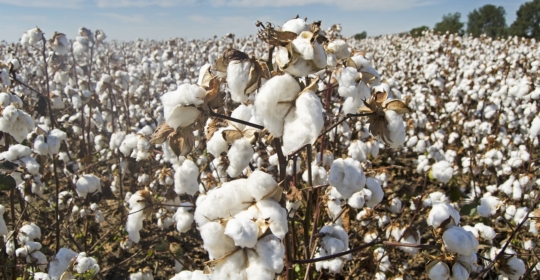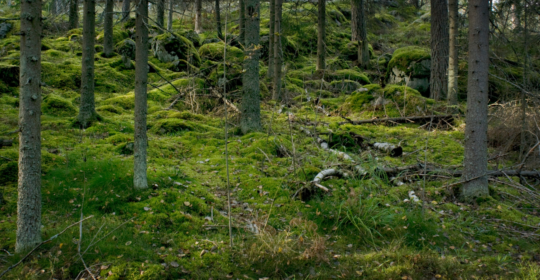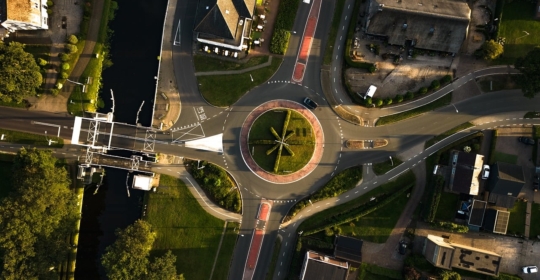
SBTN Pilot: H&M Group
Company:
H&M Group
H&M Group is one of 17 companies that submitted science-based targets for nature – for both freshwater and land – as part of a pilot which took place from May 2023 to June 2024. This case study is part of a series about the findings from those validation pilot companies.
>>View the full pilot summary report
“Thanks to the SBTN program, companies now have the opportunity to better align nature and business strategies with the latest available science and guidelines.”
Context and motivation
H&M Group is a global retail family of fashion and interior brands, headquartered in Stockholm, Sweden. H&M Group’s largest impacts on nature come from sourcing raw materials such as cotton, textile dyeing and production, and it is in turn dependent on nature for maintaining quality soils, freshwater, and pollination.
Among other sustainability goals, H&M Group have set 1.5℃ aligned SBTi climate targets through SBTi, and aim to double the recycled content of their materials to 50% by 2030. H&M Group decided to take part in the SBTN pilot because they valued the scientific approach as a means of evaluating their existing policies, ongoing program and of creating a common method across the industry.
Actions taken
In the SBTN piloting process, H&M Group drew on years of traceability work and supplier engagement data for water use and water pollution variables to assess and prioritize suppliers.
For raw material production processes (agriculture and forestry), H&M Group drew on existing available data (at the national or sub-national level) from their previous collaborations and partnerships such as with Textile Exchange, Lenzing, BKB (an agricultural intermediary) and the Better Cotton initiative. These platforms allowed for the attribution of raw material volumes to geographical areas.
However, the SBTN guidelines require companies to obtain and track data that in many instances is not yet available at the location-specific level. Industry research on pressure factors such as that done by the International Cotton Advisory Committee was critical to obtain such data at a country and crop specific level. Life cycle assessments previously conducted on GHG and water footprints were informative but did not provide the location-specific sourcing information required for SBTN target setting. The most challenging information to obtain are factors that attribute historic land use change to specific commodities used in the textile sector.
When identifying freshwater targets (Step 3), H&M Group found that secondary data was often not available to establish environmental thresholds for many basins. Where possible, within the limited timeframe of the pilot period, H&M Group conducted engagements with local stakeholders in two priority freshwater basins to find reference points for basin-specific targets. However, more time and work is required even within these basins to ensure a critical number of stakeholders agree on the science-based target setting approach.
Findings
The H&M Group submission for landscape engagement (target 3) for the SBTN pilot consisted of a cotton related project in Central India, largely in Madhya Pradesh, and a wool related project in the Eastern Cape in South Africa.
These were considered justified as some of the cotton from Madhya Pradesh (11th most important landscape based on SBTN assessment) is processed across the border in Maharashtra (top-most important landscape based on SBTN assessment). Wool sourced from the Eastern Cape in South Africa ranked 4th according to the H&M Group SBTN assessment.
H&M Group assessed and quantified how some of their existing sustainability initiatives contribute towards reducing their land footprint (land target 2). For example, their targets and initiatives to increase the use of recycled materials reduces the total amount of land required for raw material production. For land that will still be used to source virgin materials, H&M Group is managing its impacts with sustainable sourcing and regenerative agriculture practices, although this is not accounted for in the SBTN land footprint methods. The company is also conducting further work in connection to land target 2 to understand and calculate the impact of 1) improvements in business efficiency, such as by ensuring improved alignment of production and demand, and 2) circular business models, towards reducing resource use and thereby reducing impacts on nature.
On water targets, H&M Group has historically focused on the countries where textile manufacturing happens in their value chain. Their current water targets for these locations are context-based targets and are informed by risk assessments. The SBTN freshwater guidelines represent the next step in water target setting for textile manufacturing and raw material production locations, based on local scientific models for water quantity and quality. Where local water basin models were not available or ready, H&M Group together with WWF concluded that further multi-stakeholder collaborative efforts to generate the necessary data was required to set science-based targets for these basins. The SBTN guidelines also provide additional impetus for companies like H&M Group to set targets for freshwater impact in priority agriculture sourcing areas.
Challenges
H&M Group operate in a deep and complex value chain, so while their existing traceability, supplemented with some secondary data, was sufficient to meet SBTN requirements for the pilot analysis, they consider that more work on traceability is needed for them to obtain reliable sub-national location data for all commodities.
However, challenges remain, as typical sourcing systems and the nature of textile fiber markets make it difficult to obtain geo-located data to farm level for raw materials, and sourcing locations can change from season to season.
While H&M Group were helped by having already collected pressure factor data for previous carbon and water footprint exercises, they still had to spend considerable time identifying which of these datasets were most suitable and which additional sources were needed for all included pressures. For the value chain assessment (step 1b), they would have valued a standardized set of secondary pressure factor data, which would ensure that the most accurate pressure factors are used in the analysis and would allow easier comparisons between different companies. For setting targets, in step 3, they found that local water basin models and data were widely missing from priority areas in their value chain.1
H&M Group also identified some sector-specific challenges. First, some major non-agricultural inputs in the fashion industry, such as polyester, are not currently well accounted for in the SBTN methodology. Second, the current focus on nitrogen and phosphorus pollution in the freshwater targets left out some important impacts of the fashion value chain such as pesticide use in raw material production and water pollution in textile manufacturing.2 Third, further development of the SBTN methodology would be useful to encourage more regeneratively produced commodities with a lower impact on land. This would help not only consider surfaces used, but also practices and the state of biodiversity on land.
1. While the availability of local basin models and data is outside of SBTN’s control, SBTN are currently developing a basin threshold tool to help companies determine the availability of models and threshold data.
2. Future versions of the SBTN methodology will have expanded coverage of pollutants.
Benefits of process and next steps
For H&M Group, the SBTN pilot has been a valuable journey. SBTN has helped them establish a science-based foundation for nature action, and creates a unified framework across other companies, encouraging consistency and thereby enabling better collaboration between stakeholders. It has validated some of their existing policies, frameworks and engagement models across both land and freshwater. Within freshwater, it has been particularly valuable by encouraging shared risk and responsibility for freshwater by focusing on basin level target setting. This will continue to be a focus for H&M Group.
H&M Group considers SBTN to be an important means of driving greater standardization of approaches to assessing impacts and setting targets in the industry, and have found that it has given the industry a common language with which to talk about nature. Further, they feel that the SBTN pilot has prepared them for ongoing and upcoming work on frameworks such as CSRD, TNFD, and SBTi FLAG. The comprehensive SBTN guidelines enabled H&M Group to take ownership of the method themselves, which means they can update their analyses at any point to shape business decisions.
Advice for other companies
- Start now, as you learn best by digging into the details. There is enough guidance to get going even though more is to come.
- Start with a single commodity or a subset of your company as a proof-of-concept to learn more about the process and help build the business case before conducting the full analysis.
- Start stakeholder engagement early in the process, as establishing relationships and new project sites takes time. For locations that you already know that your company has a large impact on nature, you can save time by commencing place-specific action in parallel to doing the full SBTN impact assessment.
- Help is out there if you get stuck – reach out to organizations that can provide support and perspective, either through joining the SBTN Corporate Engagement Programme or through industry-specific organizations.3
3. Service providers looking to provide assistance to companies setting SBTs for nature can register through the SBTN Referral Program
Information for this case study has been provided by the company and supplemented with content from the WWF (2024) report “Integrating Companies Within Planetary Boundaries: Feedback from the first companies to set Science Based Targets for Nature (SBTN)”.
>> View the full pilot summary report
>> Learn more about setting science-based targets for nature



